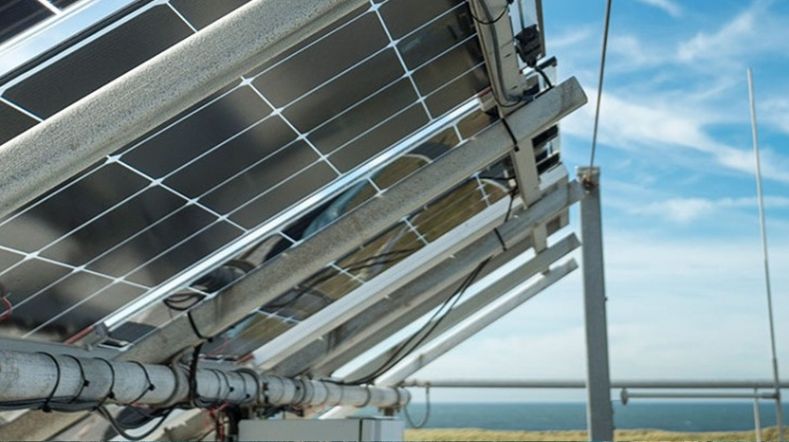
Carbon footprint floating solar energy systems similar to land systems
Floating solar systems on inland waters are, in terms of carbon footprints, similar to solar systems on land. This makes them a viable complimentary option for solar systems on land, according to a report TNO has written for IEA (International Energy Agency) PVPS Task 12. This is the first report worldwide to analyse the carbon footprint of such systems in detail for operational systems.
Josco Kester, Scientist at TNO: “Our study of two operational systems in Western Europe shows that, from the point of view of greenhouse gas emissions over the complete life cycle, floating PV systems on inland water bodies can be a good addition to ground-mounted PV systems. If the degradation of the PV modules is limited, the carbon footprint of these systems is 3-4 times lower than the EU grid mix target for 2030."
Download report
Or download the presentation (pdf) and the summary (pdf) here.
Rapidly growing market
Floating solar energy is a relatively new, but rapidly growing segment of the photovoltaics (PV) market. So far, no detailed life cycle inventory (LCI) analysis is available. The report focusses on the carbon footprint, which is the total greenhouse gas emissions during the whole life cycle, from production and installation until waste treatment or recycling at the end of life. It compares two operational floating solar energy systems to hypothetical ground-mounted systems that are modelled using background data. The floating solar systems are two commonly used systems with different floater compositions (high-density polyethylene or HDPE and steel/HDPE). They are installed on inland water bodies with very low wave height in the Netherlands and Germany.
Key results
- The estimated carbon footprint per kWh energy yield of the two floating solar energy installations is about 50 g CO2/kWh, which is 3-4 times lower than the EU grid mix target for 2030 (176 g CO2/kWh).
- During their life cycle floating solar energy systems on inland water have similar CO2 emissions to land-based solar systems. Compared to an east-west system on land the carbon footprint of the floating solar energy systems is only 15% higher than that of a ground-mounted PV system. This makes floating solar systems a viable addition to the energy mix.
- The carbon footprint can be further reduced by over 40% through three measures:
- Manufacturing PV modules with low-carbon electricity sources.
- Using recycled materials for the support structure.
- Recycling HDPE at the end of life.
Next steps
These findings underscore the need for long-term monitoring and comprehensive environmental assessments. For further research it’s recommended to identify the lifetime, performance ratio and degradation rate of the PV modules and components on the longer term.
Photo credits: BayWa r.e.
Get inspired
Solar panel yield rises


Recycling solar panels


Shade screens with rollable solar foil combines energy generation with climate control in greenhouses


Webinar: Solar energy in Brabant - Building a sustainable future for Europe


The next generation of solar technologies

